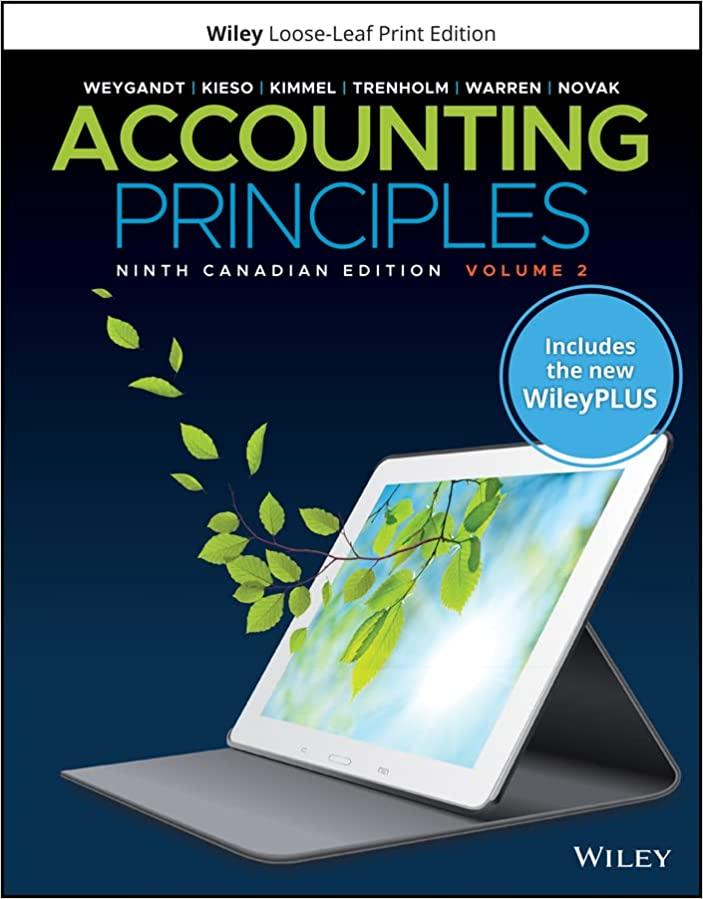Question
Case 272 Rock Creek Golf Club* Rock Creek Golf Club (RCGC) was a public golf course, owned by a private corporation. In January the clubs
Case 272 Rock Creek Golf Club* Rock Creek Golf Club (RCGC) was a public golf course, owned by a private corporation. In January the clubs manager, Lee Jeffries, was faced with a decision involving replacement of the clubs fleet of 40 battery powered golf carts. The old carts had been purchased five years ago, and had to be replaced. They were fully depreciated; RCGC had been offered $200 cash for each of them. Jeffries had been approached by two salespersons, each of whom could supply RCGC with 40 new gasoline- powered carts. The first salesperson, called here simply A, would sell RCGC the carts for $2,240 each. Their expected salvage value at the end of five years was $240 each. Salesperson B proposed to lease the same model carts to RCGC for $500 per cart per year, payable at the end of the year for five years. At the end of five years, the carts would have to be returned to Bs company. The lease could be canceled at the end of any year, provided 90 days notice was given. In either case, out-of-pocket operating costs were expected to be $420 per cart per year, and annual revenue from renting the carts to golfers was expected to be $84,000 for the fleet. Although untrained in accounting, Jeffries calculated the number of years until the carts would pay for themselves if purchased outright, and found this to be less than two years, even ignoring the salvage value. Jeffries also noted that if the carts were leased, the five-year lease payments would total $2,500 per cart, which was more than the $2,240 purchase price; and if the carts were leased, RCGC would not receive the salvage proceeds at the end of five years. Therefore, it seemed clear to Jeffries that the carts should be purchased rather than leased. When Jeffries proposed this purchase at the next board of directors meeting, one of the directors objected to the simplicity of Jeffries analysis. The director had said, Even ignoring inflation, spending $2,240 now may not be a better deal than spending five chunks of $500 over the next five years. If we buy the carts, well probably have to borrow the funds at 8 percent interest cost. Of course, our effective interest cost is less than this, since for every dollar of interest expense we report to the IRS we save 34 cents in taxes. But the lease payments would also be tax deductible, so its still not clear to me which is the better alternative. Theres a sharp new person in my companys accounting department; lets not make a decision until I can ask her to do some further analysis for us.
Questions
1. Assume that in order to purchase the carts, RCGC would have to borrow $89,600 at 8 percent interest for five years, repayable in five equal year-end installments. Prepare an amortization schedule for this loan, showing how much of each years payment is for interest and how much is applied to repay principal. (Round the amounts for each year to the nearest dollar.)
2. Assume that salesperson Bs company also would be willing to sell the carts outright at $2,240 per cart. Given the proposed lease terms, and assuming the lease is outstanding for five years, what interest rate is implicit in the lease? (Ignore tax impacts to the leasing company when calculating this implicit rate.) Why is this implicit rate different from the 8 percent that RCGC may have to pay to borrow the funds needed to purchase the carts?
3. Should RCGC buy the carts from A, or lease them from B? (Assume that if the carts are purchased, RCGC will use accelerated depreciation for income tax purposes, based on an estimated life of five years and an estimated residual value of $240 per cart. The accelerated depreciation percentages for years 15, respectively, are 35 percent, 26 percent, 15.6 percent, 11.7 percent, and 11.7 percent.)
4. Assume arbitrarily that purchasing the carts has an NPV that is $4,000 higher than the NPV of leasing them. (This is an arbitrary difference for purposes of this question and is not to be used as a check figure for your earlier calculations.) How much would B have to reduce the proposed annual lease payment to make leasing as attractive as purchasing the cart?
Step by Step Solution
There are 3 Steps involved in it
Step: 1

Get Instant Access to Expert-Tailored Solutions
See step-by-step solutions with expert insights and AI powered tools for academic success
Step: 2

Step: 3

Ace Your Homework with AI
Get the answers you need in no time with our AI-driven, step-by-step assistance
Get Started


